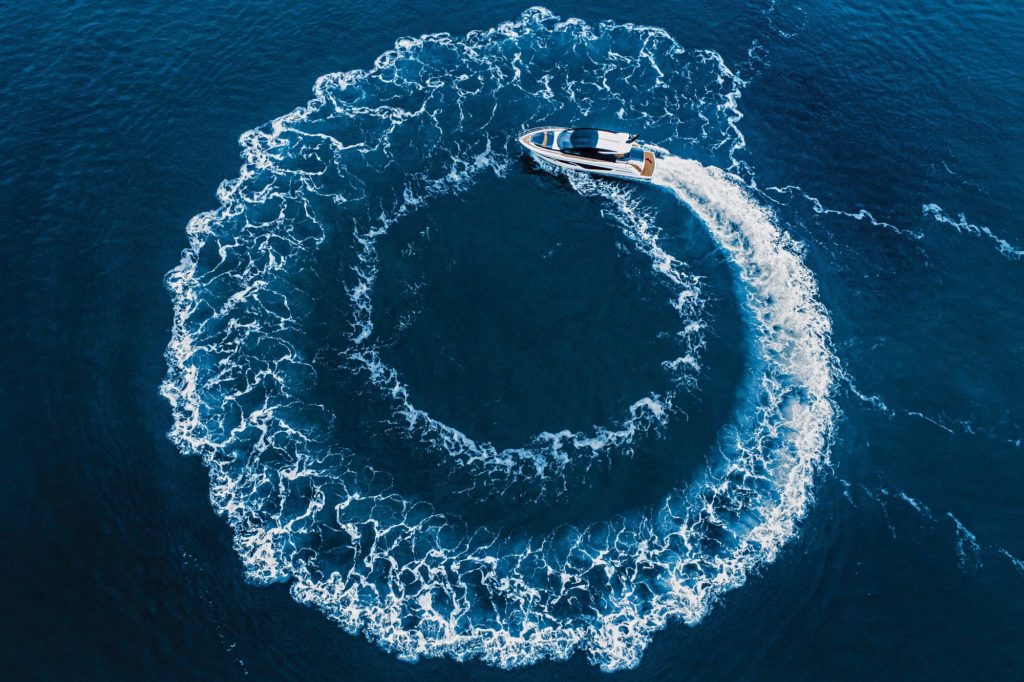
Feeling the command behind the wheel of a yacht is almost unmatched. The boat is under the control of the skipper, and where it goes is entirely up to who’s at the wheel. Whether you’re seeking a premium dayboat for the weekends, a flybridge model to feel the salt or a long-range cruiser, there’s something here for all on-the-water enthusiasts. Here are nine owner-operator yachts under 100 feet that are ready for a new season on the brine.
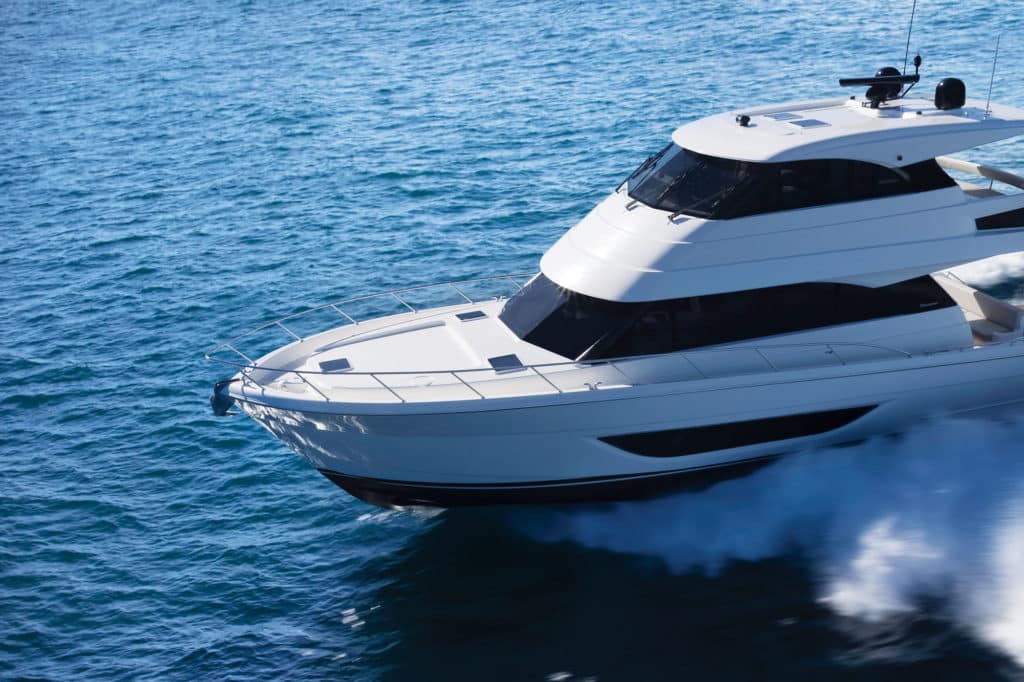
Maritimo M55
As we turned the bow north, the Maritimo M55 met 6- to 8-footers, with some 10s mixed in. Our captain, Shawn Minihan, didn’t hesitate when he pushed the throttles down. After that point, we regularly went astronaut (you know, totally weightless) on more than a few launchings at 20-plus knots.
The M55 was a rock, cleaving the seas even though we were sluiced with solid water onto the windscreen of the enclosed bridge. There was not a squeak or groan even though we were moving somewhere around 35 tons of yacht into the air and then back into deep, green-water valleys. — Chris Caswell, “Maritimo’s Sea-Tamer: the M55”
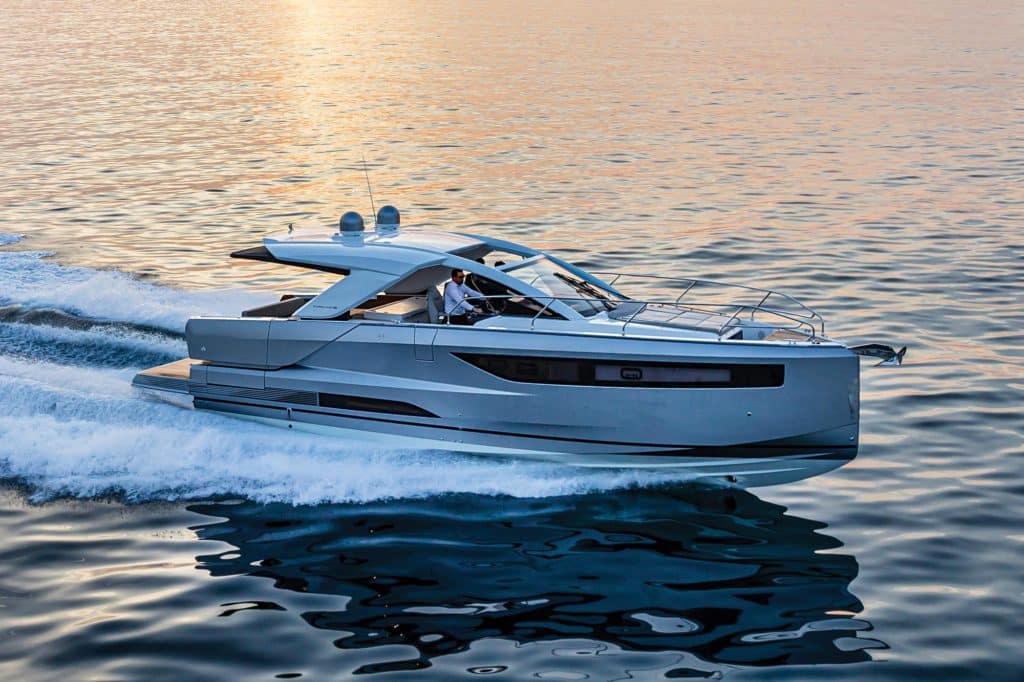
Jeanneau DB/43
Powered with a pair of 380 hp Volvo Penta D6 Duoprop sterndrives, the Jeanneau DB/43 I got aboard topped out at 32 to 33 knots at two-thirds load with 39 percent fuel, 100 percent water and seven people aboard. At a 25-knot cruise, the engines burned about 29 gph, which translates to a theoretical range of 170 nautical miles. At 8 knots, expect 340 nautical miles.
The yacht felt nimble at the wheel and turned tightly. The Michael Peters-penned hull form romped through the lively seas. Close-quarters maneuvering with the joystick was easy as well. These latest sterndrives and their electronic clutches are streets away from the old, clunky installations of the past. They slip in and out of gear smoothly. — Phil Draper, “Jeanneau’s DB/43 Reviewed”
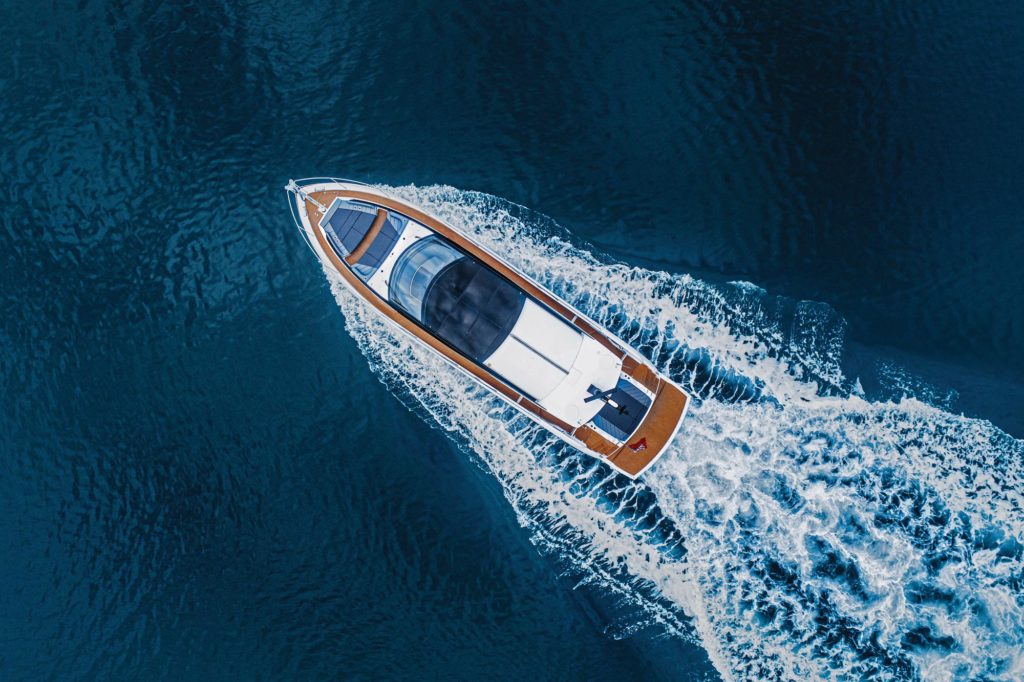
Sunseeker Predator 65
Based on the same hull as its sistership, the 65 Sport Yacht, the Sunseeker Predator 65 has an even purer profile. It eliminates features such as the 65 Sport Yacht’s upper deck, extra stairs, and sports-fly setup with a low-slung driving position, and instead offers a sliding carbon-fiber-and-glass sunroof—which means a proper open-yacht vibe on the main deck. There’s also a foredeck terrace and various cockpit furniture choices, along with a swim platform that can combine with the garage to create a beach club. Suffice it to say, during the day, the outdoors is awesome. — Phil Draper, “Sunseeker Predator 65 Reviewed”
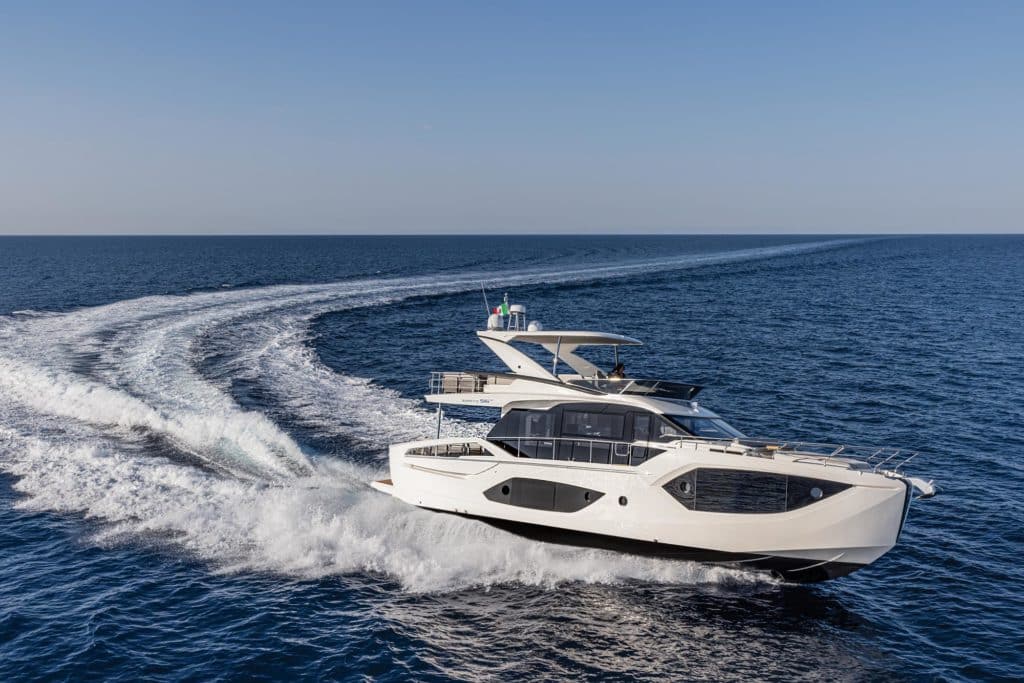
Absolute Yachts 56 Fly
It’s hard to give us more without sacrificing what we already have and want to keep, but that’s exactly what the Absolute Yachts 56 Fly has achieved. It falls in the boatbuilder’s lineup between this past year’s 60 Fly debut and next year’s 52 Fly, and it’s a yacht with serious personality. This Italian-built yacht is, as the builder says, all about charisma.
The 56 Fly has a snub-nosed bow and big windows forward that, to my mind, look like the eyes of a sea turtle. Those full-height picture windows to the sides benefit hugely from notched, cut-down bulwarks, as does the aft deck from the fretted quarter rail. These design elements are all about boosting the views out and underscoring the connection to the sea. — Phil Draper, “Reviewed: Absolute Yachts 56 Fly”
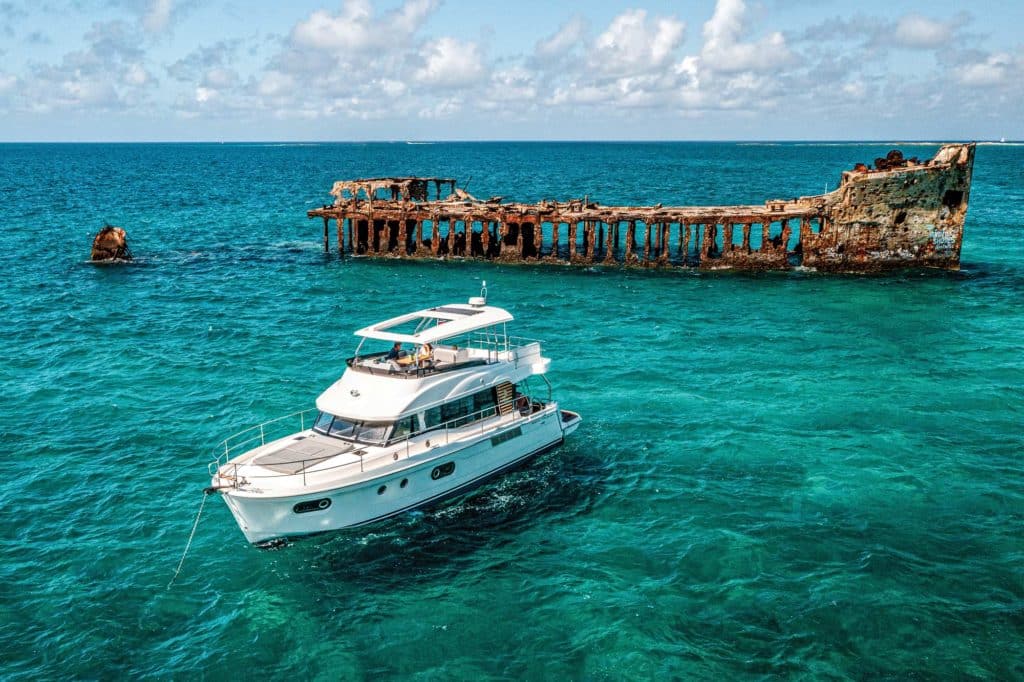
Beneteau Swift Trawler 48
For traditional trawler enthusiasts, the Beneteau Swift Trawler 48 offers a range of 1,300 nautical miles at a leisurely 6.7 knots, or 1,000 nm at 8 knots. Owners can run nonstop from New York to Miami or San Diego to Cabo San Lucas, Mexico.
And yet, with the twin 425 hp Cummins diesels on the Swift Trawler 48 that I got aboard (380 hp Cummins are standard), owners also can scamper for home at 26 knots, if foul weather threatens or reservations for dinner ashore are waiting.
In other words, yachtsmen can have the best of both worlds: range when wanted, speed when needed. — Chris Caswell, “Beneteau’s Swift Trawler 48 Reviewed”
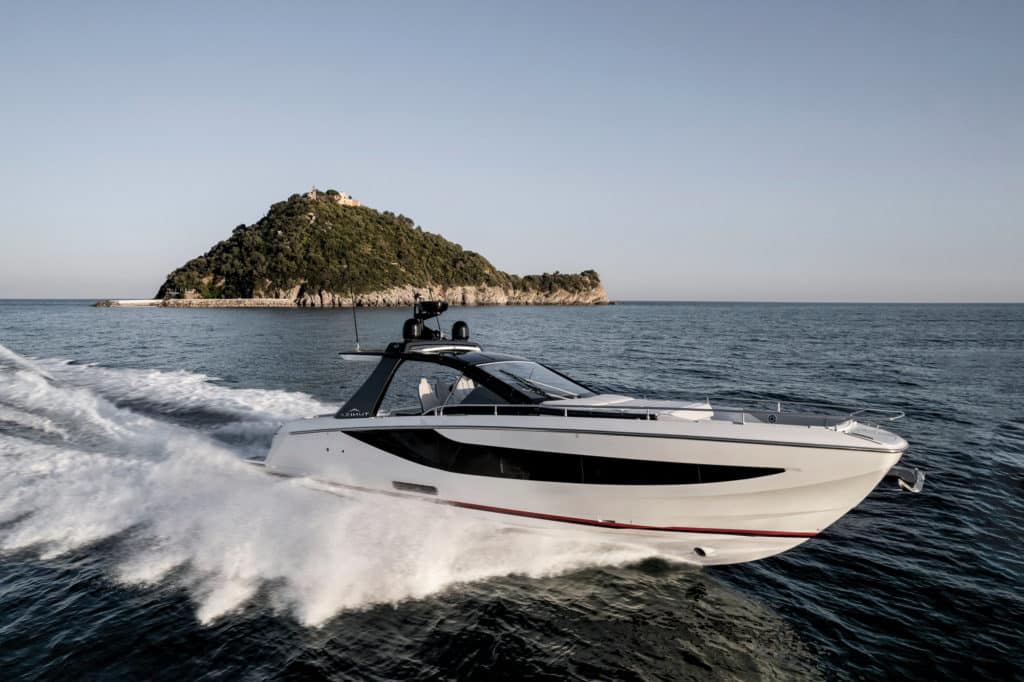
Azimut Verve 42
Blasting off waves, the Azimut Verve 42 landed softly thanks to the 22.5-degree transom deadrise and Michael Peters hull form. Yes, there was spray, but most of it was thrown aside, courtesy of double strakes and a wide spray chine/rail. We were in flat water long enough to see a top speed of 45 knots, and then the Gulf Stream dictated our speeds while we occasionally pushed the envelope. — Chris Caswell, “Azimut Verve 42 Reviewed”
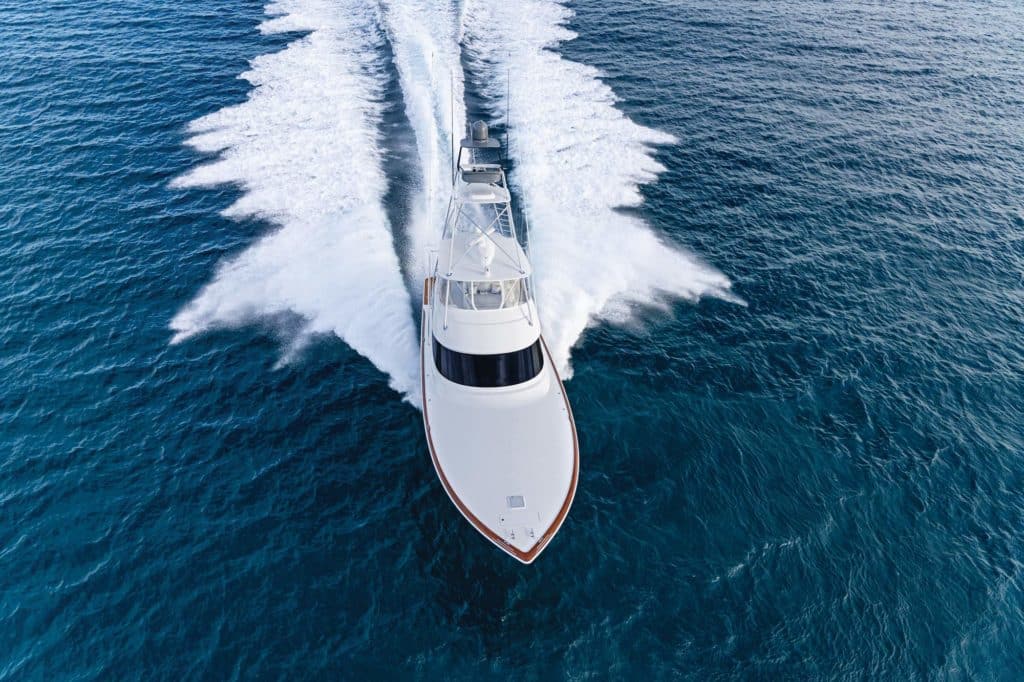
Viking Yachts 64 Convertible
The cockpit’s uncluttered layout is the result of thousands of hours of experience aboard other Vikings in big-game tournaments around the globe. The 64C I got aboard had a leaning post/rod holder that bolted into an aluminum backing plate laminated in the cockpit sole, with double-hatch fish boxes on each side. Abaft that, a rounded teak cap rail held a livewell. Overlooking the whole scene was a mezzanine for crew to keep an eye on the spread, along with tackle stowage and a cold box. This 64C also had a Dometic ice machine on the port side for chilling down the fish boxes. — Chris Caswell, “Reviewed: Viking Yachts 64 Convertible”
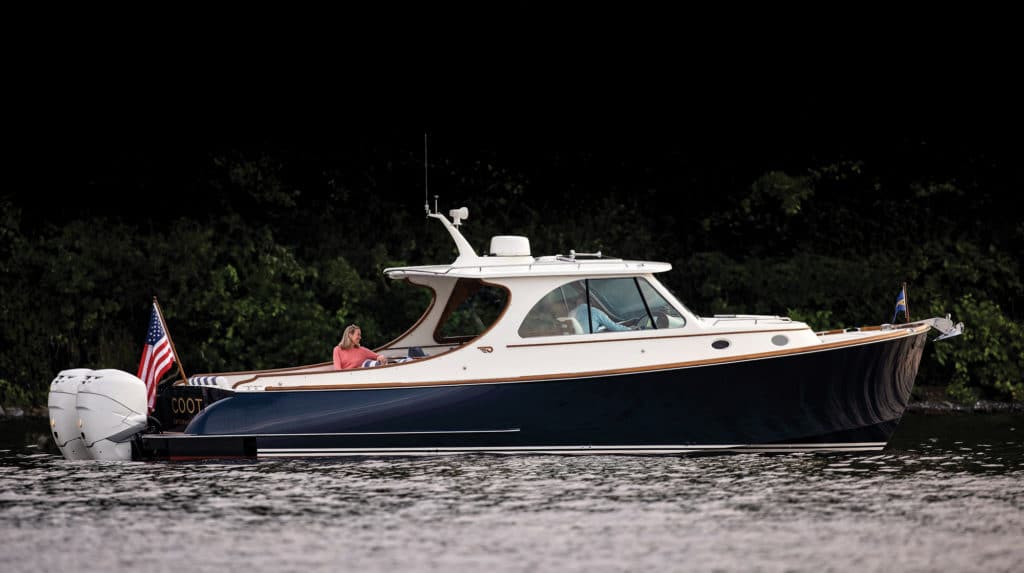
Hinckley Yachts 35
This 35-footer has notable speed, thanks in part to a pair of optional 350 hp Mercury outboards. The 35 I got aboard made 40 knots on the pins running at 6,000 rpm with a full load of fuel and a half-tank of water. This thoroughbred-level gallop burns 60 gallons per hour. At top speed—and considering a 10 percent fuel reserve—range is about 180 nautical miles. At 4,000 rpm and a 24-knot cruise speed, fuel burn plummets to 23.5 gph and range jumps to 276 nautical miles.
It’s admirable performance when you consider that those engines are pushing a boat displacing 13,174 pounds. Hinckley also offers Yamaha outboards, and the 35’s standard engines are twin 300s, from either Mercury or Yamaha. At press time, Hinckley had sold 15 hulls, and all the owners had picked the bigger engines, Bryant says. — Patrick Sciacca, “Hinckley Yachts 35 Review”
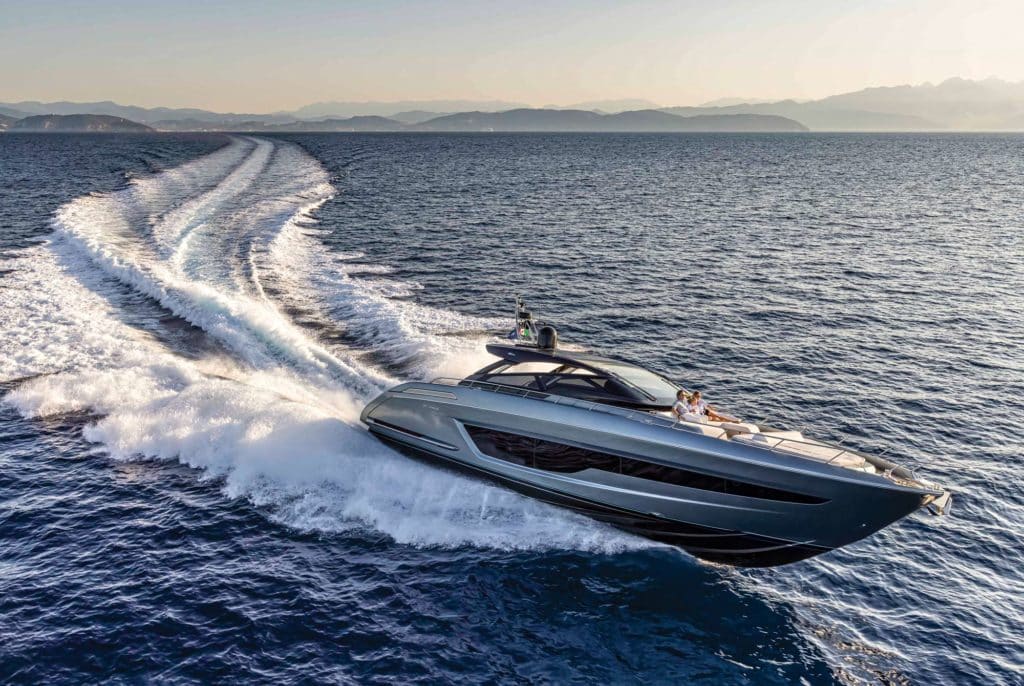
Riva 68 Diable
A pantograph-framed canvas awning protects most of the aft deck when desired. The whole space forms one big, open main-deck lounge, effectively seamless from the swim platform through to the helm console. As with the smaller Dolceriva and Rivale hardtops, the 68 Diable incorporates air-conditioning ducts, but there’s still plenty of headroom beneath—at least 6 feet, 6 inches. The cockpit furniture that isn’t optional is symmetrical on each side of a central corridor. Two L-shaped sofas extend along each side, with a dining table to port (this table could be specified to starboard instead, or on both sides). On Hull No. 1, this table is mahogany and inlaid with the Riva logo. It’s on a pedestal than can rise or drop at the flick of a switch, creating a day bed. A pop-up TV is abaft the observer bench to starboard. — Phil Draper, “Riva 68 Diable Review”








